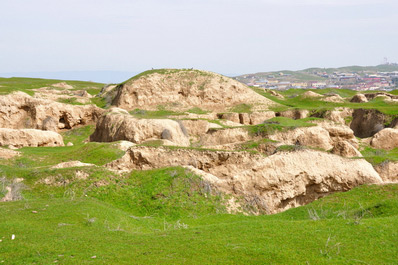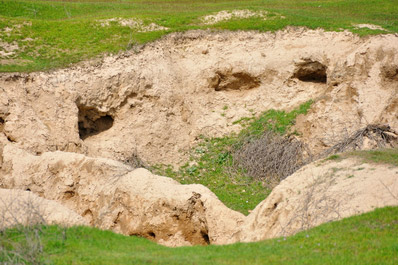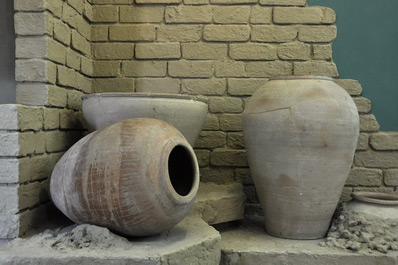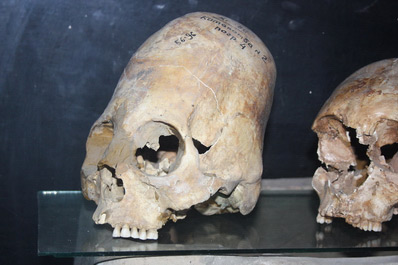Samarkand Afrasiab Museum of History
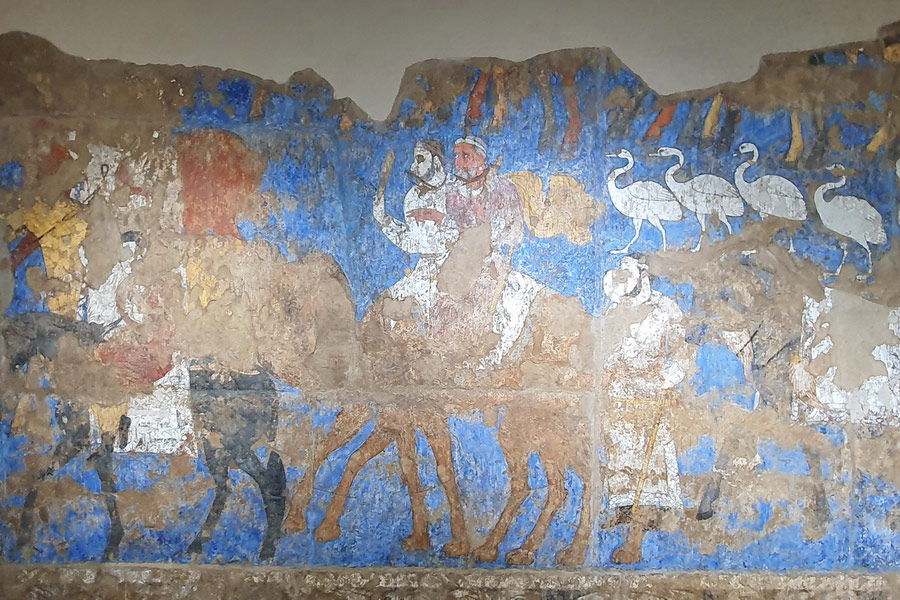
"Afrasiab" is a historical museum situated near one of the largest archaeological sites in Central Asia—the ancient settlement of Afrasiab. The museum boasts a unique collection of exhibits that showcase the life and culture of the people who lived in the Zeravshan River valley for centuries. The settlement of Afrasiab was founded no later than the 7th century BC.
The Museum was opened in 1970. It is housed in a two-story building designed in the style of Soviet modernism. A wide staircase leads to the main entrance, and the facade is adorned with bas-reliefs depicting birds.
History
The area in Samarkand, known as Afrasiab, is now a vast expanse of barren hills. In ancient times, however, it was a thriving city and a major center of trade and culture, known as one of the wealthiest, most fortified, and most beautiful cities in the East.
In the 8th century BC, Afrasiab was known as Marakanda and served as the capital of Sogdiana. The Sogdians played a vital role along the Great Silk Road, engaging in the transportation and sale of silk, spices, precious stones, metal goods, and more. Additionally, as intermediaries between different cultures, the Sogdians facilitated the spread of religious movements, technologies, and arts. They were instrumental in promoting Buddhism, Zoroastrianism, Manichaeism, and other beliefs.
The Sogdians developed their own alphabet, resulting in written artifacts that provide a glimpse into their civilization. The Sogdian language also served as a lingua franca along the Great Silk Road. In Central Asia, the Sogdians held a position similar to that of the Phoenicians in antiquity.
The city of Afrasiab ceased to exist in the 13th century during the Mongol invasion led by Genghis Khan. Following the devastating raids, the city was completely destroyed. The hills of Afrasiab were never resettled, and the surviving inhabitants moved to the southwest of the ancient settlement, where they began to rebuild their lives.
In the 19th century, the first archaeological excavations were conducted at Afrasiab. The total area of the ancient settlement spans more than 200 hectares, with cultural layers several meters thick, covering the entire history of ancient Samarkand from its founding in the 8th century.
Museum Exposition
A significant highlight of the museum's exposition is a collection of frescoes dating back to the 7th century. These detailed paintings once adorned the walls of the reception hall of King Varhuman, who ruled Sogdiana from 655 to 690. One of the frescoes depicts the ruler on horseback. Other wall paintings from the royal palace portray scenes of ambassadors arriving with valuable gifts for the revered ruler of Sogdian lands. The frescoes on all four walls of the royal reception hall illustrate a series of processions bringing offerings and gifts to the ruler of Samarkand from various parts of the world. The surviving fragments of these frescoes are invaluable cultural artifacts and an essential part of Samarkand's historical heritage.
The museum also features a collection of ossuaries—small urns or boxes used to store the bones of the dead. This tradition of collecting skeletonized remains originated in ancient Samarkand under the influence of Zoroastrian customs. The bodies were offered to birds, and the gnawed bones were then collected and stored in vessels of different sizes. These ossuaries, made of ceramics, are decorated with ornaments, images of pagan deities, sacred fire, and people performing ritual dances.
The museum's halls also display remnants of the royal castle's walls, bricks from the citadel, a hearth for sacrificial fires, millstones, and well-preserved pottery. These exhibits, which date from various historical periods, provide vivid examples of the high cultural development of the societies of their time.
A separate hall in the museum is dedicated to the archaeological excavations and the scientists who participated in studying the ancient settlement.
Visitors to the museum can take advantage of guided tours, where a guide provides detailed explanations of each exhibit. Additionally, there is a film about the history of Afrasiab available in various languages, providing an engaging overview of the ancient city's past.


